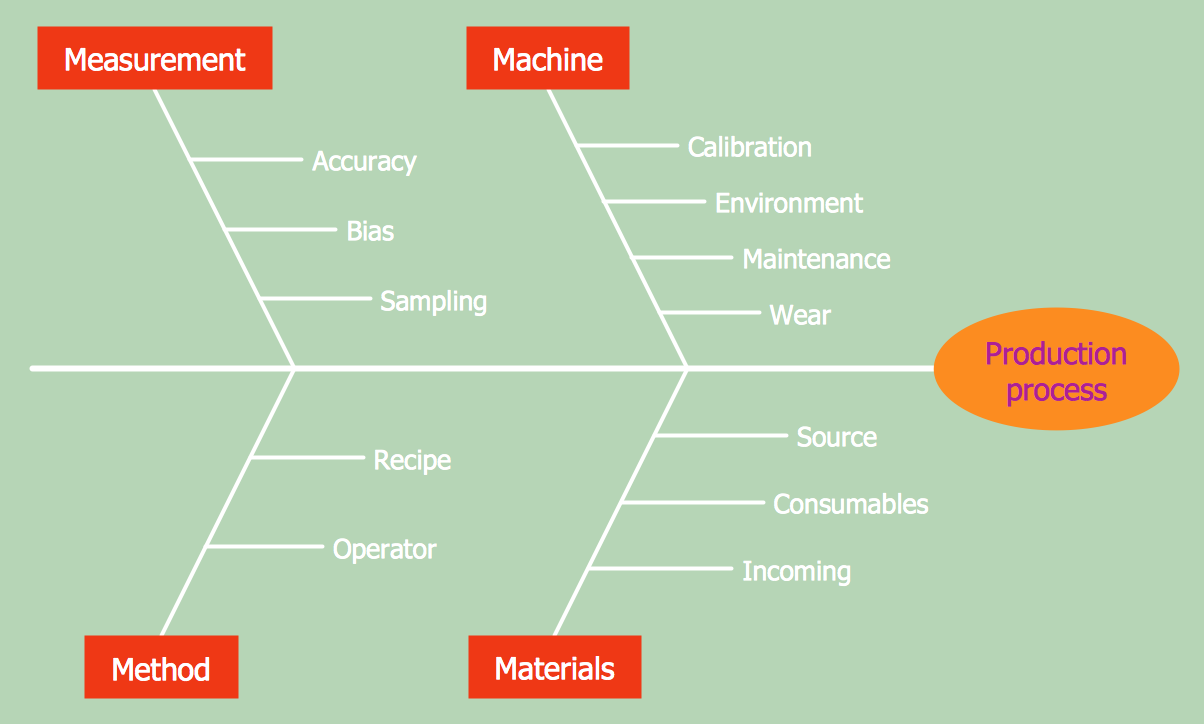

Specific to our case, root cause analysis will help the quality improvement team determine why the dialysis program is not attaining the target of 30% of patients initiating home dialysis and help facilitate potential strategies for effective change.įishbone/Ishikawa/cause and effect diagrams The goals of a root cause analysis as they pertain to quality improvement include ( 1) determining what is happening, ( 2) determining why the outcome is happening, and ( 3) determining what can be done to prevent the outcome from happening again ( 3). The practice of root cause analysis, as it pertains to quality improvement efforts, is on the basis of the premise that the solution to a particular outcome is found by examining the fundamental factors that may be contributing to that outcome. It is a technique that uses a structured investigational approach to understand the true causes of a particular outcome. Root cause analysis provides such an approach. As such, investigation into why a particular outcome occurs requires a structured approach that can identify active events (events occurring at the point of interface between humans and a complex system) and latent events (the hidden problems within a system) that contribute to the outcome.
#Fishbone diagram problem solving series
In any given system, most outcomes stem from a complex series of behaviors and events that occur within that system. Although other approaches to understanding problems within a system exist, including Six Sigma and Lean ( 1), root cause analysis is the most simplistic and easy to understand, and it is the most frequently used approach in identifying quality problems. Hence, it is an essential tool for quality improvement. Whereas root cause analysis has historically been used in the health care setting to investigate the cause of medical errors, it has more recently been used to address lapses in the quality of care and improve quality outcomes. Root cause analysis was originally developed in systems engineering to identify “the basic and causal factor(s) that underlie variation in performance.” It is now a familiar tool used by hospitals and health care organizations to identify problems and their solutions.

Using the Institute for Healthcare Improvement Model for Improvement ( 2) as the framework to guide improvement work, the objectives of this article are to ( 1) describe the tools used to identify the main contributors to a quality of care outcome, including cause and effect diagrams, Pareto analysis, and process mapping, and ( 2) review common change concepts and brainstorming activities to identify effective change ideas.
#Fishbone diagram problem solving how to
However, they are unsure how to identify the main causes for their low use of home dialysis and how to use the results of such an analysis to promote change within their dialysis unit. The team is aware that the most effective changes target the primary or root causes of the quality of care problem. The team is now tasked with identifying opportunities for improvement and testing their effects on the system of care for home dialysis. In the previous article in this Moving Points feature ( 1), an interdisciplinary team consisting of ( 1) a lead nurse or physician from the home dialysis unit ( 2) technical experts from the predialysis clinic and in–center dialysis program (nursing staff, physician, social worker, etc.) ( 3) a clinical leader ( i.e., manager) from the dialysis program ( 4) an improvement advisor and ( 5) an executive sponsor was formed with the aim of promoting home dialysis (home hemodialysis and peritoneal dialysis) uptake from its current level of 15% to a target of 30%. These methods will be applied to our home dialysis quality improvement project, providing a practical example that other kidney health care professionals can replicate at their local centers. We will also review common change concepts and brainstorming activities to identify effective change ideas. The tools used to identify the main contributors to a quality of care outcome will be described, including cause and effect diagrams, Pareto analysis, and process mapping. Using the example of home dialysis (home hemodialysis and peritoneal dialysis), this article within this Moving Points feature on quality improvement will provide health care professionals with the tools necessary to analyze the steps contributing to certain outcomes in health care quality and develop ideas that will ultimately lead to their resolution.

After the causes of a particular outcome are known, changes can be made to address these causes and change the outcome. To change a particular quality of care outcome within a system, quality improvement initiatives must first understand the causes contributing to the outcome.


 0 kommentar(er)
0 kommentar(er)
